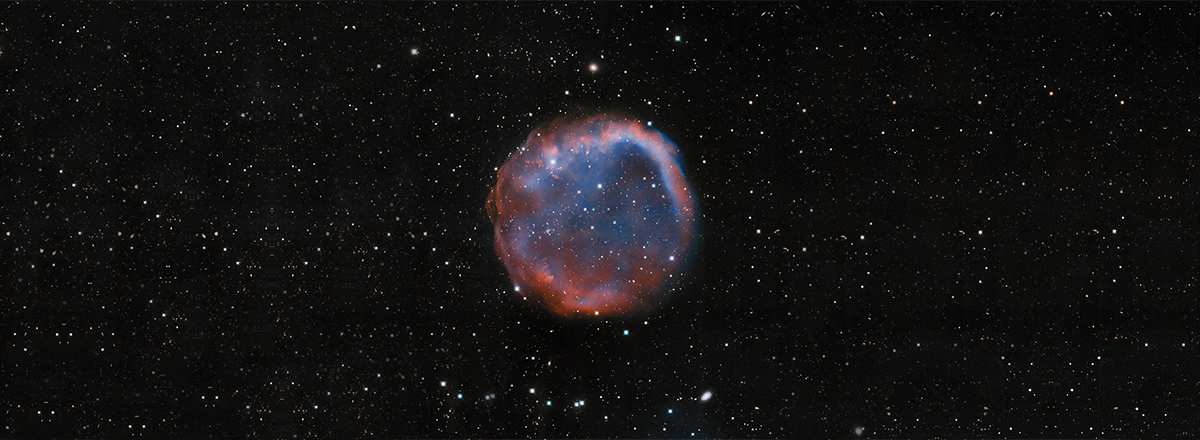Telescope Captures an Image of a Dead Star's Shroud
EGB 6 will exist another few thousand years. After that, the stellar core will cool down and turn into a faint white dwarf, which will stop emitting enough ultraviolet light to ionize the ejected envelope.

The image presented was taken by the Nicholas U. Mayall 4-meter Telescope at the Kitt Peak National Observatory. The image shows an object that resembles a giant soap bubble – it's the planetary nebula EGB 6, which is located about 1,500 light-years away.
Such objects represent a kind of shroud that envelopes a dying star.
Planetary nebulae form at the end of the life cycle of sun-like stars, which have reached the red giant stage and ejected their envelope into the surrounding space. The ultraviolet radiation of the exposed stellar core ionizes the ejected matter, making it glow.
The planetary nebula phase lasts several tens of thousands of years. EGB 6 will exist for another few thousand years. After that, the stellar core will cool down and turn into a faint white dwarf, which will stop emitting enough ultraviolet light to ionize the ejected envelope. As a result, it will become invisible.

